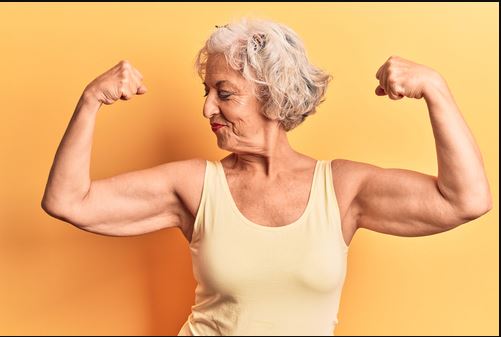Muscle Loss With Age? How to Best Target Your Exercise to Keep Your Muscle Strength
The theme for this week …
Muscles and aging. Vibrant strong muscles are important for strength, balance, metabolism, and how we feel about ourselves. Do you know how to best target your strength training? This week we turn to research to provide some guidance. Read on …
Muscle, the foundation of our being!
Muscles are the work horse of the body, literally and figuratively. As we age we gradually lose muscle mass. This can begin as early as 25 — yikes!
For most people, muscle loss typically begins around age 50, and is generally from lack of use related to injury, illness, or sedentary lifestyles. It is not simply age!
The good news is muscles can change at any age! And without intense workouts. Turns out consistency goes a long way when rebuilding muscle mass.
Which muscles atrophy fastest?
This study identified the muscles which changed the most between a group of 25 year olds and 75 year olds.
These muscle groups are listed from those with the most to least loss:
- Psoas (Hip Flexor) 29%
- Quadriceps (Thigh) 27%
- Deep Back muscles 24%
- Triceps (upper arm) 20%
- Biceps (upper arm) 19%
- Hamstrings (thigh) 19%
- Calf 14%
- Glutes 13%
- Ankle/shin 9%
This muscle loss can occur even if you exercise regularly, and is often from the events in life we tend to forget about.
Why would you lose muscle mass if you’re exercising?
What research is finding is that muscle loss is not a constant related to age. Muscle loss happens in periods when we are not able to exercise due to:
- Medical procedures including cataracts, dental work, joint replacements, and cancer treatments.
- Accidents including falls, auto accidents, and things falling onto us.
- Illness including the seasonal colds and flu, shingles, GI issues, and drug reactions.
Note: The top losses occur in the muscles related to the limb section connecting to the core. The core/limb combination provides your power needed for movements like standing from sitting. When power bursts are not being used, the muscles begin to fade away.
The forearm/hand and calf/foot muscles maintain mass better. These are smaller muscles used for repetitive tasks and stabilizing, not power.
How can Bridging® help?
For each of these, Bridging® is able to identify why you may be left with a movement challenge (i.e. pain or balance) and quickly reset the muscles. You can get back to your activities and build back the lost muscle.
Insight of the Week from Cara
When chatting with clients about their activity goals I often find myself encouraging them to add strength training. These clients are generally active with the likes of walking, pickleball, cardio, yoga, or pilates.
Yes, you may be doing arm curls, and/or pressing overhead, but you should consider more. Add the category which is essential to long-term health and well-being, strength training.
Which muscles should we target and why?
Working the big muscles of the legs and core is beneficial for health, balance and longevity. Here are three reasons why:
- Fall prevention: Core and leg strength keeps you mobile and safe.
- Metabolic health: These big muscles synthesize your insulin and nutrients to stabilize glucose levels for energy.
- Muscle loss: The big muscles are the first to dwindle/atrophy when not being used.
Working with big muscles has the biggest payback — here are suggestions.
Some simple exercises can be some of your best choices to keep your muscle mass and strength:
- Squats with body weight or adding weights in your hands.
- Lunges with body weight or added weight in your hands or core.
- Dead lifts to build both core and leg muscles.
- Planks for back muscle strength.
Psst … Gardening incorporates nearly all of the above in case you’re allergic to exercise.
Bridging® clears your aches and pains so these are possible!
Over the years we’ve helped many people get back on track with their activity or exercise goals. At the end of a session, they walk away with ease, and a feeling of better balance, and being able to do their exercises without pain.

